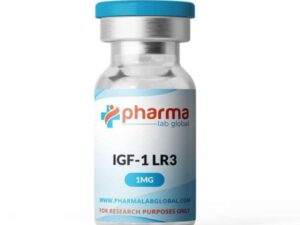Weight Loss Treatment
Everyone has the right to feel beautiful and confident just as they are. We partner with you to identify the best weight loss medication tailored to your unique needs, all while promoting self-love and care throughout your journey. Our goal is to help you become the version of yourself you’ve always envisioned.
- $150.00 – $300.00 Select options This product has multiple variants. The options may be chosen on the product page
- $235.00 – $435.00 Select options This product has multiple variants. The options may be chosen on the product page
- $340.00 – $465.00 Select options This product has multiple variants. The options may be chosen on the product page
Weight Loss Treatment
Find the right weight loss treatment for you with free and fast delivery.
If you’re aiming to shed excess weight, a doctor-prescribed weight loss treatment could help. Options include tablets such as Mysimba or convenient injectable pens like Wegovy, Ozempic, Zepbound, and Mounjaro. Keep in mind that any weight loss treatment should be combined with a balanced diet and regular exercise for best results.
To request weight loss medication—whether you’re starting treatment, refilling your current prescription, or switching to a different option—just follow these easy steps.
What treatment is available for obesity?
The primary approach to managing obesity involves regular physical activity and maintaining a nutritious, well-balanced diet. Additionally, weight loss medications can be used as a supportive measure. In cases where other methods have proven ineffective, weight loss surgery may be an option, but only after all other alternatives have been exhausted.
Obesity is a term used when someone has a lot of body fat. The best way to check your weight is by using a BMI calculator. You are classed as obese if you have a BMI of 30 or above, or overweight if you have a BMI between 25 and 29.9.
Exercise
A nutritious and well-balanced diet can support weight loss, but it’s also important to burn calories through consistent physical activity. According to U.S. guidelines, adults should aim for at least 150 minutes of moderate-intensity exercise weekly, which can be divided into five 30-minute sessions. However, any amount of exercise is beneficial, so if you find it challenging, you can begin with just 10 minutes a day and gradually increase over time.
Exercise has many health benefits and can reduce the risk of other illnesses that can affect your weight. According to the NHS, regular exercise can reduce the risk of getting type 2 diabetes by 40%.
Moderate intensity exercise is anything that increases your breathing and heart rate, so this can be different for everyone. Some common examples are:
- cycling
- power walking
- dancing
- swimming
You can also do 75 minutes of vigorous exercise every week if you have less time, or a combination of both. Vigorous exercise is anything that causes your heart to beat rapidly and breathe very hard, so that you could not hold a conversation. This includes:
- competitive sports like rugby, gymnastics, and boxing
- circuit training
- running
For effective weight loss, incorporate strength and balance exercises into your routine twice a week. Activities like carrying groceries or practicing yoga and tai chi can help build strength. Most local gyms offer the necessary equipment and resources to improve both strength and balance.
Since we spend much of our time sitting, it’s important to take breaks by standing and moving throughout the day. If you need guidance on an exercise routine, you can consult your doctor, a weight loss specialist, or a gym trainer to help design a suitable plan. Starting with small, realistic goals that you can maintain is more effective than aiming for big changes right away. For beginners, there’s no need to immediately commit to 75 minutes of exercise per week—ease into it gradually.
If you are currently or have previously been obese, increasing your physical activity may be necessary. To avoid obesity, aim for 45 to 60 minutes of moderate exercise daily. For those who have experienced obesity, it’s advisable to exercise 60 to 90 minutes each day to prevent regaining lost weight.
To make exercise a part of your daily life, find something that you enjoy doing or add social elements, by working out with your partner, family, or friends.
Diet
To lose weight at a safe pace of 0.5 to 1 kg a week, you should reduce your calorie intake by 600 kcals a day. Your doctor will help you with a diet plan if you need it. This is not about following a ‘fad’ diet, but about making healthier long lasting choices that will improve your eating habits for the rest of your life.
Women can lose weight by limiting their daily calorie intake to 1,400 or fewer, while men should aim for no more than 1,900 calories. For effective weight loss, replace high-calorie and unhealthy foods with better alternatives. This involves reducing consumption of processed foods, fast food, and sugary beverages such as sodas and alcohol.
A healthy and balanced diet should include:
- some dairy foods and milk
- some sources of protein such as meat, eggs, fish, and beans
- lots of vegetables and fruits
- some rice, pasta, bread, potatoes, and other starchy foods (ideally these will be wholegrain)
- only small amounts of foods or drinks that contain a lot of sugar or fat
If you are overweight or obese, try to avoid any foods that contain a lot of salt. This can increase your blood pressure, which could cause hypertension.
Read food and drink labels so you can work out how many calories you are having in a day. Drinking lots of water is the best way to cut out unnecessary calories in drinks.
You should avoid any ‘fad’ diets, as these are not healthy or realistic and tend not to work. They can make you feel ill and cutting out an entire food group or not eating for a long period of time (fasting) is not sustainable. If you want to follow a diet programme, make sure it:
- is not overly restrictive on what foods you can have
- educates you about healthy eating and portion sizes
- is based on losing weight safely and gradually, to achieve long term weight loss goals that are likely to last
If you are considering a very low calorie diet, which means consuming less than 800 calories each day, you should speak to your doctor. Only some people are suitable for this and if you are, you should not do it for longer than 12 weeks.
Medication
Wegovy is a weight-loss injection comparable to Saxenda. Like Saxenda, it uses a hormone to regulate appetite, but it contains semaglutide rather than liraglutide. Wegovy, along with Zepbound, works by curbing hunger and supporting weight loss when combined with a healthy diet and exercise. It is administered once weekly.
Saxenda is an injectable medication designed to aid weight loss. Its active component, liraglutide, works by targeting brain receptors that regulate hunger, helping to reduce appetite and calorie intake. The treatment involves a daily injection, and your doctor will create a gradual dosing schedule, typically increasing the dose over five weeks or more for safe and effective use.
Orlistat is a weight loss tablet that contains the active ingredient orlistat. This changes how your body digests fat. You can take orlistat up to 3 times daily, with any meal that contains fat.
Xenical is a branded version of orlistat and contains the same active ingredient. They both work in the same way.
Mysimba is a weight loss tablet that contains 2 active ingredients, which are bupropion hydrochloride and naltrexone hydrochloride. They work on the area of the brain that controls your energy levels and food intake. You will start with one tablet a day and follow a treatment plan to gradually increase your dose over a 4 week period.
When you take any weight loss treatment, our doctors will review your weight regularly and make sure it is working as it should. Any weight loss medication must be taken alongside a healthy diet plan and regular exercise.
How does prescription weight loss medication work?
Each prescription weight loss medication works in a slightly different way, as they contain different active ingredients. Wegovy, Saxenda and Mysimba all work on the brain, to reduce appetite levels and cravings, making it easier to eat less and lose weight. Orlistat and Xenical work by changing how your body digests fat.
Weight loss injections
Saxenda is a weight loss injection that contains the active ingredient liraglutide. This acts like another hormone in your body called glucagon-like peptide-1 (GLP-1). Usually, after you have eaten a meal, your intestines release GLP-1 to tell your brain that you have eaten. Saxenda works the same way and sends signals to your brain that you are full, so you can eat less and reduce your weight.
Wegovy is another injection that is now available for people to help them lose weight. It also contains a GLP-1 active ingredient, but it contains semaglutide instead of liraglutide. Like Saxenda, Wegovy tells your brain you’re full up too, making it easier to eat less and lose weight with diet and exercise.
Weight loss tablets
Orlistat and Xenical contain the active ingredient orlistat. When taken with a meal that contains fat, it attaches to the enzymes in your digestive system, called lipases. Orlistat blocks lipase from breaking down fat in your food and absorbing it. This means some of the fat from your meal will turn into waste and be eliminated from your body.
Mysimba works differently than orlistat. Instead of working on the digestive system, it works on the areas of your brain that control energy levels and food intake. This can reduce your appetite so that you feel fuller when you eat less. The combination of both active ingredients can also control the pleasure you get from eating, reducing food cravings.
The side effects of weight loss treatment
Weight loss treatment can have side effects, just like any other medication. Not everyone will get them and these usually only last for a few weeks. If you get side effects whilst taking weight loss treatment and it does not go away or bothers you a lot, you can speak to our doctors. Some treatments are increased gradually over time, like Saxenda and Mysimba, to reduce the chances of side effects.
Common side effects of Saxenda
The most common side effects of Saxenda are:
- diarrhea or constipation
- nausea or vomiting (feeling or being sick)
- headaches
- dizziness
- low blood sugar
- dry mouth
- redness or itching at injection site
Saxenda is increased slowly to reduce the chances of nausea and vomiting, which is the most common side effect.
Common Mysimba side effects
Common Mysimba side effects include:
- hot flushes
- anxiety
- trouble sleeping
- headaches
- dizziness
- restlessness
- heart palpitations
These usually go away once your body gets used to the medication. You cannot take Mysimba if you have certain medical conditions, but our doctors will check your suitability before prescribing.
Common side effects of orlistat and Xenical
The most common side effects of orlistat and Xenical are:
- needing to poo urgently and more frequently
- oily or fatty poo
- oily discharge from your rectum (anus)
- flatulence (farting)
Sticking to a low fat diet will decrease the risk of these side effects.
Can I get weight loss medication over the counter?
Weight loss treatment must be prescribed to you by a doctor, so it cannot be found over the counter. You can only take weight loss medication if you meet special conditions and some treatments cannot be taken if you take other medications or have certain health conditions. A doctor will make sure it is safe to take weight loss medication before you are prescribed it.
















